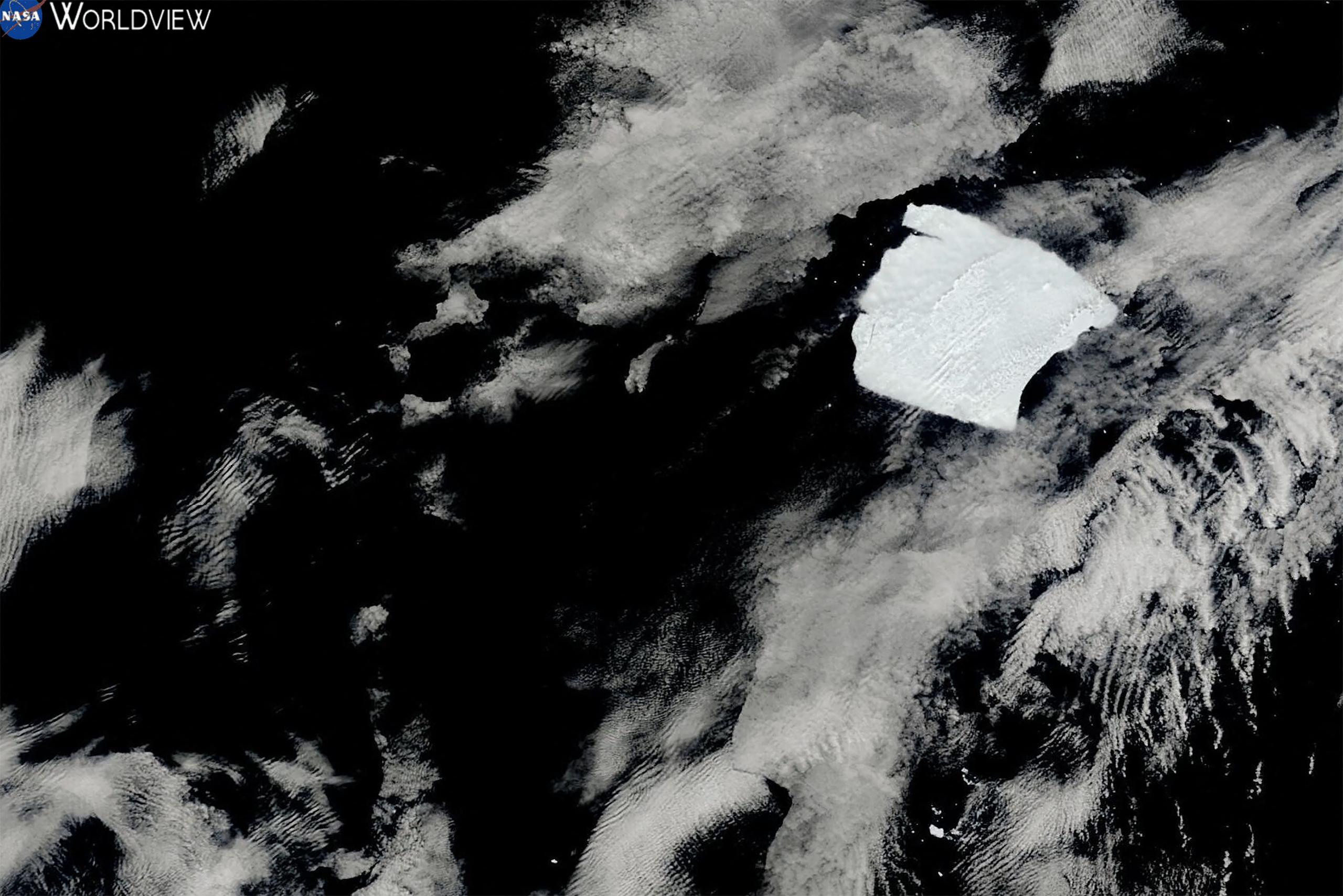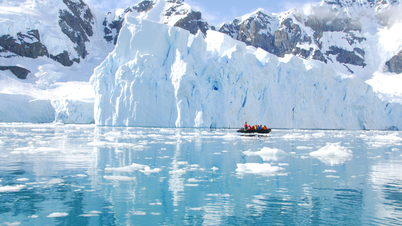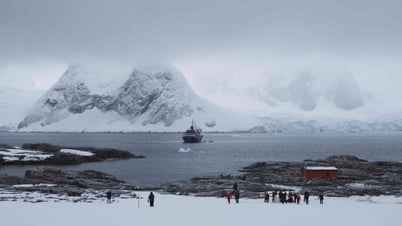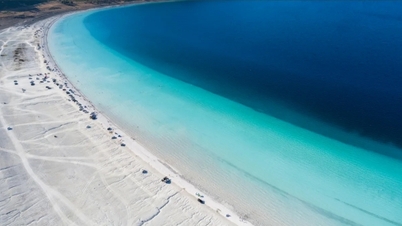
Image of giant iceberg captured by NASA satellite in January
AFP news agency on February 1 quoted scientists as saying that the world's largest iceberg has begun to break off in Antarctica, the first sign that it is about to break apart after breaking off and drifting freely in 2020.
Andrew Meijers of the British Antarctic Survey (BAS) said a 12-mile-long chunk of ice was breaking away from the giant iceberg. He witnessed the iceberg while leading a scientific team in late 2023 and described it as "a huge white cliff, 40 or 50 meters high, stretching from horizon to horizon."
Named A23a, the iceberg, which covers nearly 3,360 square kilometres and weighs nearly 1 trillion tonnes, had been largely intact since slowing its northward drift in 2020.
It is drifting towards South Georgia Island in the South Atlantic, raising concerns it could run aground in shallower waters and disrupt food sources for penguin chicks and seals.
“This is definitely the first clear slice of the iceberg,” said Meijers, who has been tracking the iceberg via satellite since 2023.
World's largest iceberg breaks off Antarctica
Glaciologist Soledad Tiranti, who is currently on an Argentine Antarctic expedition, also said that a part of the iceberg had broken off. The fragment was about 80 square kilometers in size.
The icebergs are filled with deep cracks, and although the massive iceberg has shrunk over time and lost a much smaller piece, it is still “holding up pretty well,” Mr Meijers said.
Previously, other giant icebergs have disintegrated “relatively quickly within weeks” after they started losing large pieces, he said.
Iceberg A23a broke away from the Antarctic continental shelf in 1986 but remained there until 2020, when its northward journey sometimes caused it to encounter ocean currents and rotate in place.
This giant body of fresh water is swept away by the world's most powerful ocean current, the Antarctic Circumpolar Current.
Its trajectory towards South Georgia, an important feeding ground for seals and penguins, is unlikely to change now that it has lost that part, Mr Meijers said.
But if it continues to break up, it will “pose much less of a threat to wildlife” because foraging animals can move easily between the smaller blocks in search of food, he added.
Source: https://thanhnien.vn/tang-bang-troi-nang-1000-ti-tan-bat-dau-tan-vo-o-nam-cuc-185250201112343427.htm




![[Photo] Buddha's Birthday 2025: Honoring the message of love, wisdom, and tolerance](https://vphoto.vietnam.vn/thumb/1200x675/vietnam/resource/IMAGE/2025/5/12/8cd2a70beb264374b41fc5d36add6c3d)


![[Photo] Prime Minister Pham Minh Chinh starts construction of vital highway through Thai Binh and Nam Dinh](https://vphoto.vietnam.vn/thumb/1200x675/vietnam/resource/IMAGE/2025/5/12/52d98584ccea4c8dbf7c7f7484433af5)



























![[Photo] General Secretary To Lam meets and expresses gratitude to Vietnam's Belarusian friends](https://vphoto.vietnam.vn/thumb/1200x675/vietnam/resource/IMAGE/2025/5/11/c515ee2054c54a87aa8a7cb520f2fa6e)

































































Comment (0)